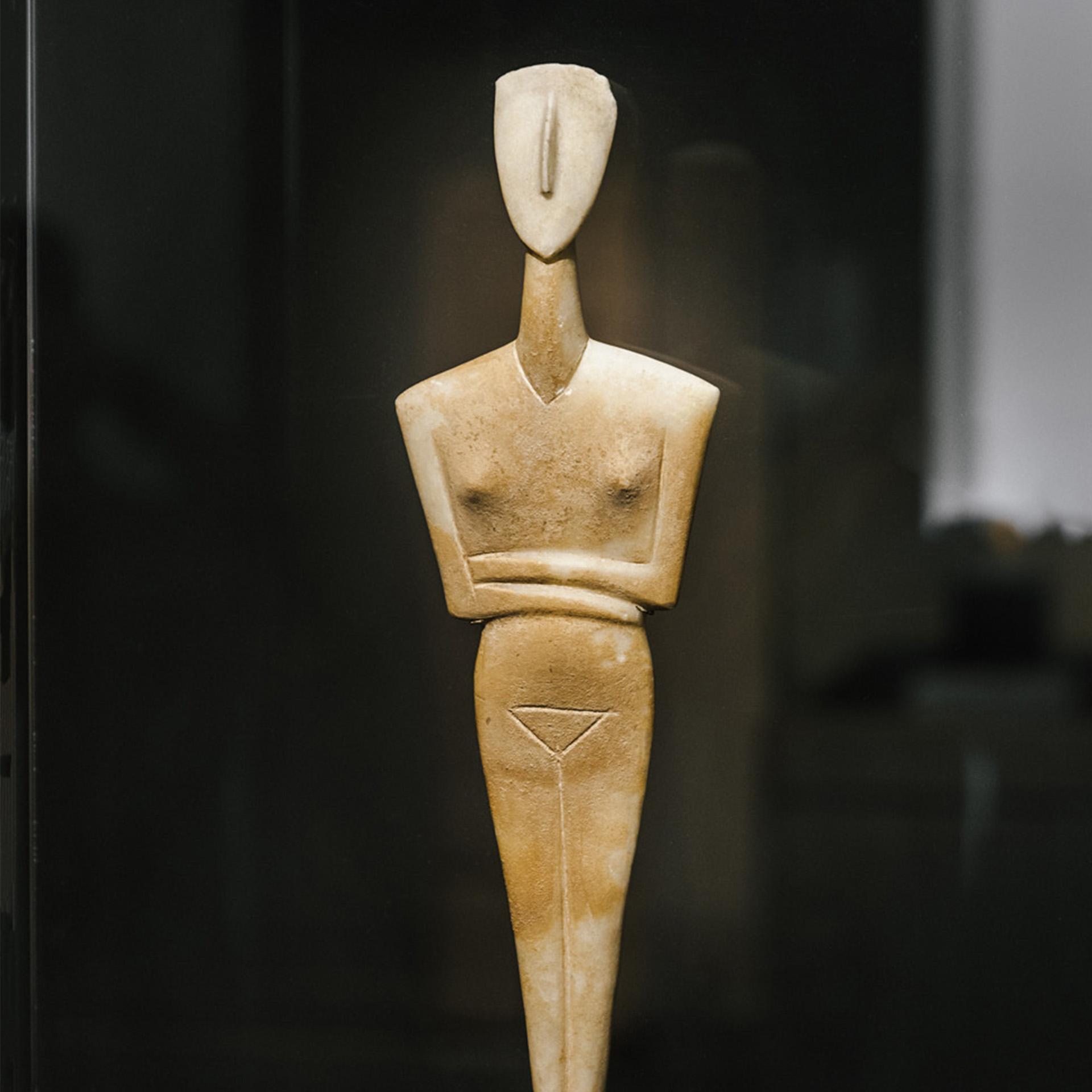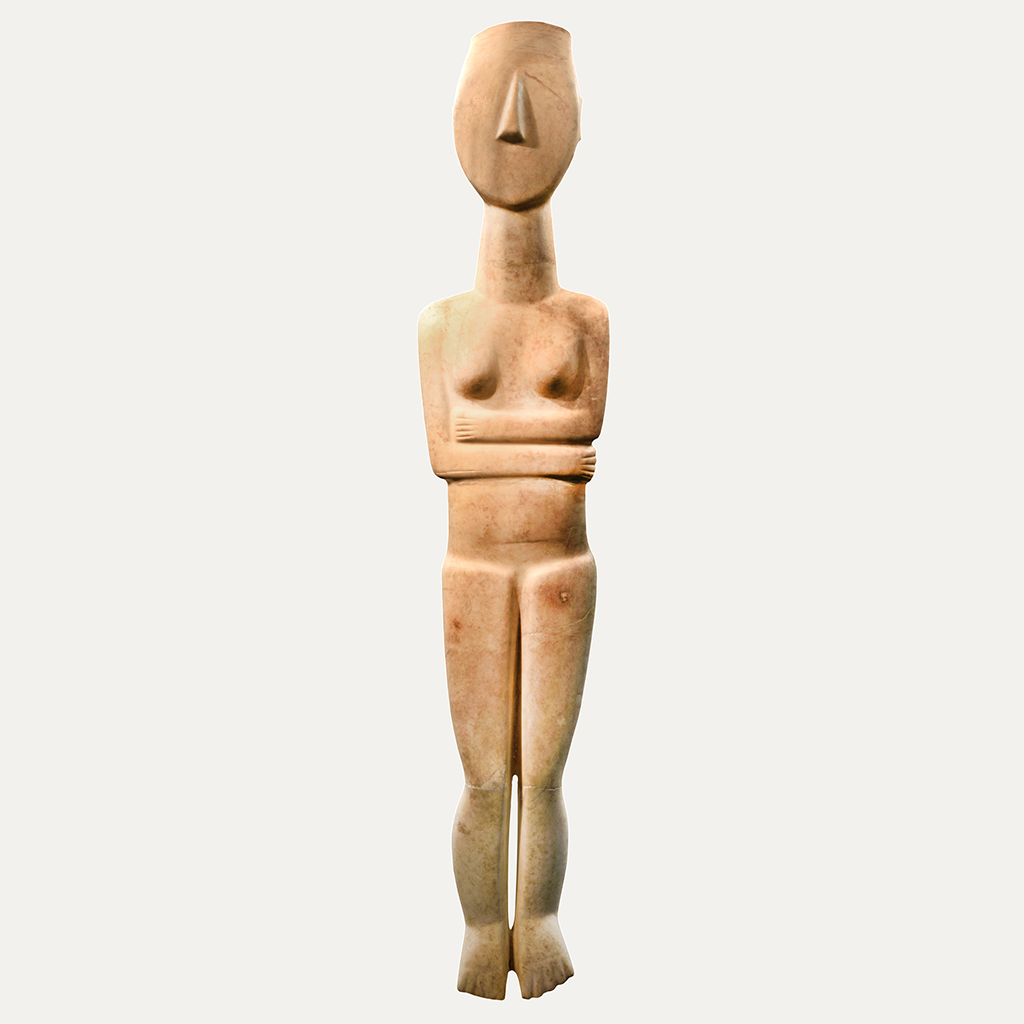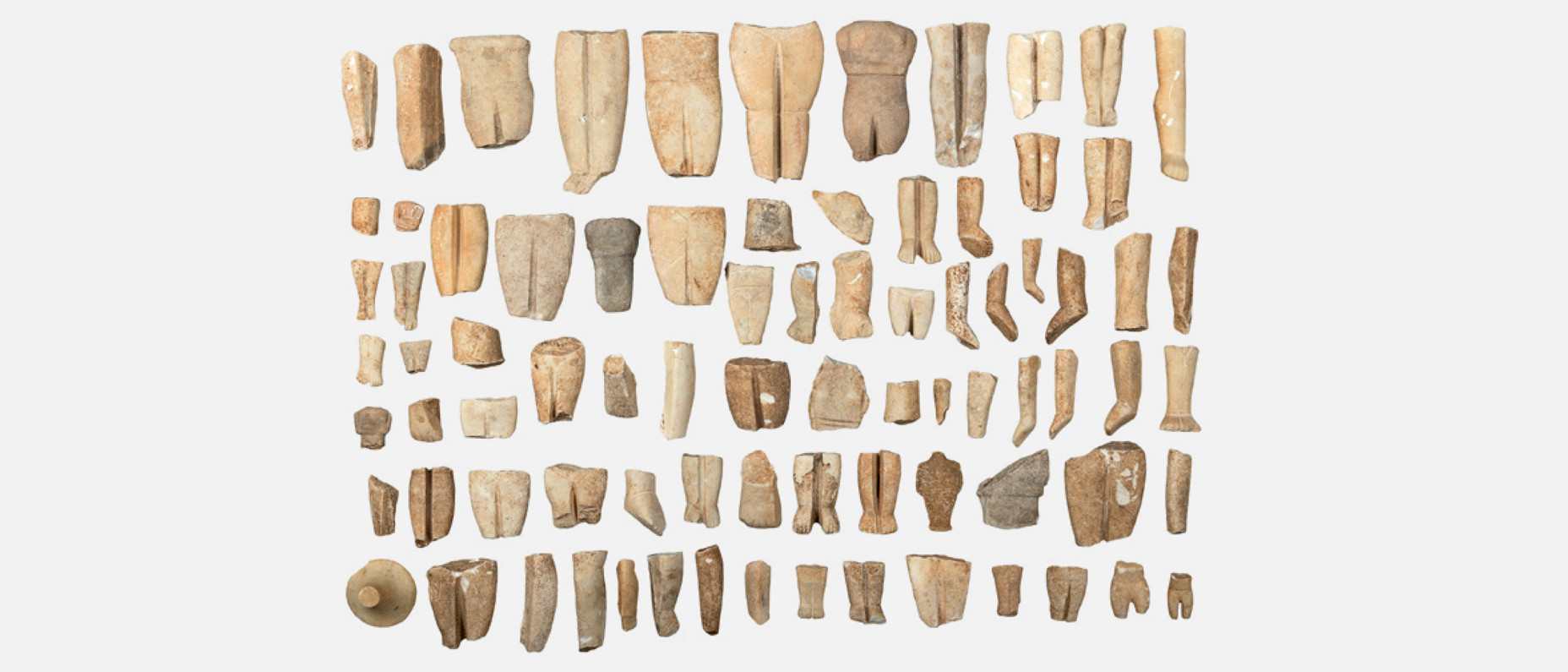Cycladic Art
PERMANENT EXHIBITION
ON VIEW

The Exhibition presents more than 350 objects in six sections, which represent all the phases of the Early Cycladic culture that developed on the Aegean islands during the 3rd millennium BC (c. 3200 – 2000 BC). The creators and carriers of this civilization were the inhabitants of the larger and smaller islands themselves.
Archaeological research has shown that during the Early Bronze Age, a relatively numerous amount of prominent settlements developed in the Cyclades, island communities that developed metallurgy and trade, thus creating a network for the exchange of ideas and social interactions. The most characteristic art with which the islanders were involved was marble carving. The factors that allowed for the development of the Early Cycladic culture, as it was named by Christos Tsountas, the founder of prehistoric archaeology in Greece, were the strategic position of the islands in the Aegean and the natural environment, but mainly their mineral wealth: obsidian, emery, copper, silver, and, above all, marble, the dominant material in the Cycladic landscape.
MARBLE FIGURINES
However, the most attractive creations of Cycladic marble sculpture are the figurines, works that express the anthropocentric character of the Early Cycladic culture. In the beginning, the solutions provided by the craftsmen creations were not very bold. Drawing on the Neolithic tradition, the first figurines were created in a very schematic way: carved from small pebbles or from marble, with contours reminiscent of a violin, and therefore called violin-shaped.
As time passed, and with the help of metal tools, the figurines acquired anatomical details and became more naturalistic (such as the Plastiras and Louros types), which resulted in the so-called “canonical” type from the mature period (2700 – 2400/2300 BC). These are naked, mostly female figures, with lyre-shaped or triangular heads raised backwards, arms folded under the breasts, knees slightly bent, and legs pointing downwards. They occur in several varieties (Kapsala, Spedos, Dokathismata, Chalandriani), which are named after the sites where they were found on the various islands.
A representative figurine of the “canonical” type of the Dokathismata variety, one of the best known in the Exhibition, welcomes the visitor at the entrance of the hall. This figurine is one of the most elegant and flowing forms from known pieces of Early Cycladic sculpture, which, despite the abstraction and simplification that characterize them, preserved the essence of the human form and were the greatest source of inspiration for important 20th century artists such as Constantin Brancusi, Amedeo Modigliani, Alexander Archipenko, Henry Moore, and many others.
The large sculpture, 1.40 meter high, imposes itself on the Exhibition space with its amazing simplicity, the purity of the marble, and the clear contours. The large-scale works are thought to have been intended for public worship in open-air sanctuaries.
A unique piece is the large-scale male sculpture (which stood at an original height of approximately 1 meter) which is not preserved as a whole and adopts the same passive posture as the female figurines. The male figure is also represented by a figurine of a hunter or warrior wearing a harness, as well as by the unique figurine of a seated figure in action, which is known as the ‘cup bearer.’ Although the gender is not specified, it is considered to represent a male figure, as are all the other ‘figurines in action.’ The figure is seated on a stool and raises a small cup with his right hand, as if preparing for a toast or libation.
During their tour, the visitors will also encounter a series of late figurines with degenerate features, called “post canonical,” precisely because all the features that constitute the canonical type are altered during the last centuries of the 3rd millennium BC.
The use and significance of the Cycladic figurines remains a mystery, as the lack of written sources directs the study exclusively towards archaeological data and logical assumptions. However, the excavation evidence is also incomplete, since the high value of the figurines on the international antiquities markets caused a large amount of looting in the Cyclades during the 1950s and 1960s. Systematic excavations in recent decades have shown that most of these figurines come from graves, but that they also appear in settlements. The nude female figures that dominate Cycladic art have been interpreted by most scholars as depictions of a deity associated with fertility, based on the emphasis placed on the figurines’ genitalia, such as the recurring elements like embossed breasts and the incised pubic triangle. They have also been interpreted as worshippers, devotees or psychopomps who accompanied the dead in the afterlife or as ritual objects associated with events that were decisive in a person’s life, such as their coming of age or marriage. These are, it seems, unique representations of the human form with an unchanging, timeless presence, whose use was probably multidimensional.
TOOLS – POTTERY

The Museum’s Exhibition of Cycladic Art includes a wide range of objects made of clay, stone, marble, and metal. Most of these pieces come from tombs.
The visitor will encounter examples of sharp obsidian blades from Melos island, metal tools, and clay vessels such as cylindrical pyxides, aryballoid vases, and even the enigmatic “frying-pan” vessels, which feature incised and impressed decoration on their outer surfaces.
MARBLE VESSELS
The Exhibition features numerous marble vessels: collared jars (kandiles) with perforated lugs for suspension or transport, bowls, which are the most common type of marble vessel of the Early Cycladic II period (2700 – 2400/2300 BC), kylikes (drinking vessels), spherical pyxides (box used to keep small objects), and even some vessels that might have had a ritual use, such as the “Dove vase,” a masterpiece of marble carving.
“KEROS HOARD”

The group known as the “Keros Hoard” is presented within its own section. It is a group of fragmentary marble figurines, marble and clay vases, and other objects that were illegally excavated in the 1950s and 1960s on the island of Keros, between Naxos and Amorgos. Systematic excavations were later carried out in the looted area of Kavos (where it is presumed that the ‘Hoard’ was found), and an extremely rich concentration of mostly fragmented Early Cycladic artefacts was found. Indeed, the way in which the objects are broken and the wear and tear on the breakages suggest that they were deliberately fragmented in antiquity. This evidence has led to the conclusion that Kavos on Keros island was a site for depositing objects of great symbolic importance, as well as their deliberate fragmentation in the context of specific rituals.
The “Keros Hoard” was thoroughly studied and published by the curator of the Museum of Cycladic Art, Dr P. Sotirakopoulou, in her monograph The “Keros Hoard” Myth or Reality? Searching for the Lost Pieces of a Puzzle (Athens, 2005).















